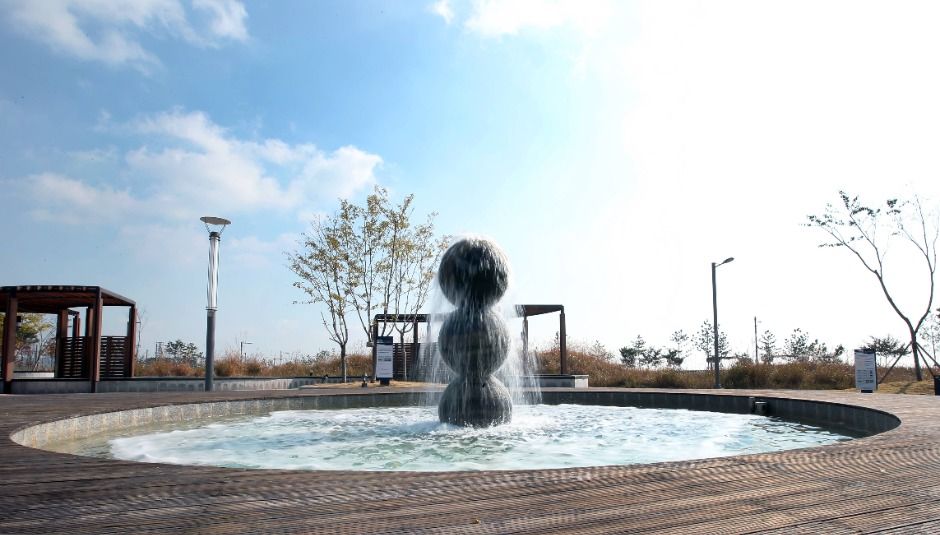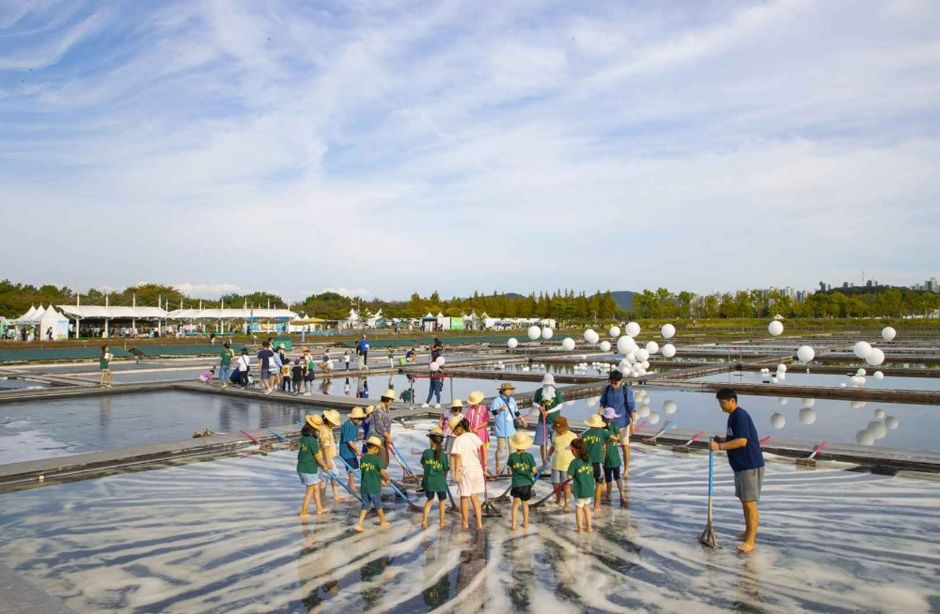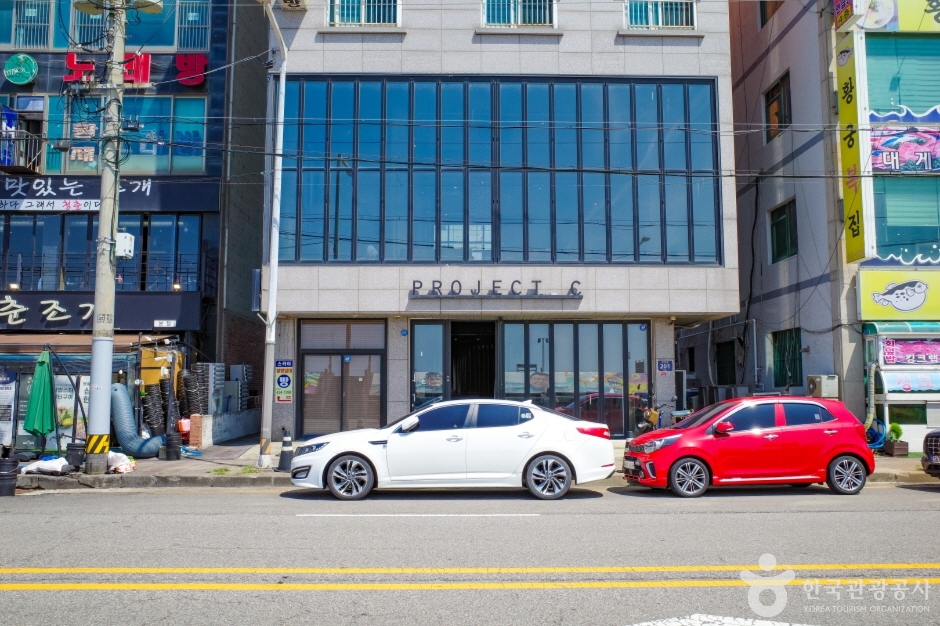Oido Island (오이도)
12.9Km 2025-05-08
175 Oido-ro, Siheung-si, Gyeonggi-do
Located off the western coast of the city of Siheung, Oido Island was originally an island and then connected to the mainland during the Japanese occupation as its tidal flats were used as a salt plant. During the day, the blue sea and the red lighthouse, the symbol of Oido, create a picturesque scene. In the evening, visitors can enjoy the spectacular sight of red sunsets over the sea. It also includes the largest prehistoric site on the west coast. The expansive tidal flats are home to a wide variety of creatures, attracting seasonal migratory birds.
Seaside Park Foot Spa (씨사이드파크해수족욕장)
13.0Km 2025-10-23
12 Yongsumal-ro 28beon-gil, Jung-gu, Incheon
Seaside Park Foot Spa is located inside Seaside Park, which is divided into various zones. It features various sports facilities and playgrounds, as well as an artificial rock waterfall, outdoor performance hall, sculptural fountain, observatory, and sculptures. Visitors can enjoy a variety of sights along with an open sea view. The foot spa is equipped with foot washing stations, allowing visitors to wash their feet before soaking. There are separate indoor and outdoor spaces to choose from according to personal preference, with outdoor areas having screens installed for comfortable use even on sunny days. Foot baths are known to be beneficial for blood circulation, making them popular among local residents.
Aramaru Observatory (아라마루 전망대(아라폭포))
13.0Km 2024-02-15
79-4 Duksil-dong, Gyeyang-gu, Incheon
The Aramaru Observatory, a circular structure perched in the gorge section of Gyeyangsan Mountain, occupies the highest point of the Arabaetgil, a maritime path linking the West Sea with the Hangang River. Renowned for offering the most spectacular vista of the entire Arabaetgil, the observatory features a glass floor that provides a stunning overhead view of the Arabaetgil below. At night, the ambiance is further enhanced by the twinkling lights installed along the railings and floor, creating a mesmerizing atmosphere that captivates visitors.
Siheung Gaetgol Festival (시흥갯골축제)
13.1Km 2025-07-10
287 Dongseo-ro, Siheung-si, Gyeonggi-do
+82-31-310-2919
By incorporating games and activities, Siheung Gaetgol Festival aims to raise awareness about ecology, the environment, and family. “Gaetgol” refers to the water channels flowing through tidal flats during low tide, home to various halophytes, wetland creatures, and over 60 species of birds, making it an ecological treasure trove. The festival features a wide range of exciting programs. The activities include the “Eco-orienteering Mission Game,” where participants wear “Family Run” T-shirts and explore the festival grounds, a salt playground on the salt pans, Gaetgol Metaverse Family Run, Gaetgol Test, and Family Speed Quiz. Families completing the missions receive a completion medal from the festival.
◎ Tip
Don‘t miss the Acoustic Festival, Jazz Concert, and Gaetgol Moonlight Night Tour set against the backdrop of the salt playground at the old salt field and Gaetgol. As an eco-friendly festival, it promotes a car-free environment. Bring your tumblers and reusable containers to participate with a sense of pride.
Siheung Gaetgol Eco Park (시흥 갯골생태공원)
13.1Km 2025-05-08
287 Dongseo-ro, Siheung-si, Gyeonggi-do
+82-31-488-6900
Siheung Gaetgol Eco Park in Gyeonggi-do features the nation's only inland beach along the shores of a river that ebbs and flows with the ocean tide. The park offers the chance to learn about the traditional salt-making techniques, as well as the many unique flora that grow here. The park was designated as a National Ocean Wetland Protection Zone in February 2012.
CU - Yeokgok Branch [Tax Refund Shop] (cu역곡점)
13.1Km 2024-06-27
45, Buil-ro 699beon-gil, Wonmi-gu, Bucheon-si, Gyeonggi-do
-
Project C (프로젝트씨)
13.1Km 2024-02-21
201 Oido-ro, Siheung-si, Gyeonggi-do
Situated on the picturesque coastline of Oido Island, Project C café welcomes visitors with a spacious, inviting atmosphere accentuated by lofty ceilings and expansive windows. The café's wooden interior design creates a cozy and warm ambiance. Their signature menu features the almond cream spänner, a delightful almond cream latte. Another beloved dessert is the Dutch Baby Plain, a German-style pancake topped with fresh cream, ice cream, and caramelized banana.
Olive Young - Yeokgok Station Nambu Branch [Tax Refund Shop] (올리브영 역곡역남부점)
13.4Km 2024-06-27
1F, 499, Gyeongin-ro, Sosa-gu, Bucheon-si, Gyeonggi-do
-
Nike - Starfield Bucheon Branch [Tax Refund Shop] (나이키 스타필드부천)
13.4Km 2024-04-18
3F, #3170, 1, Okgil-ro, Bucheon-si, Gyeonggi-do
-
ABC-Mart - Starfield Bucheon Branch [Tax Refund Shop] (ABC마트 ST스타필드부천점)
13.4Km 2024-04-18
1, Okgil-ro, Bucheon-si, Gyeonggi-do
-




![Nike - Starfield Bucheon Branch [Tax Refund Shop] (나이키 스타필드부천)](http://tong.visitkorea.or.kr/cms/resource/23/2881923_image2_1.jpg)
![ABC-Mart - Starfield Bucheon Branch [Tax Refund Shop] (ABC마트 ST스타필드부천점)](http://tong.visitkorea.or.kr/cms/resource/25/2881925_image2_1.jpg)
 English
English
 한국어
한국어 日本語
日本語 中文(简体)
中文(简体) Deutsch
Deutsch Français
Français Español
Español Русский
Русский